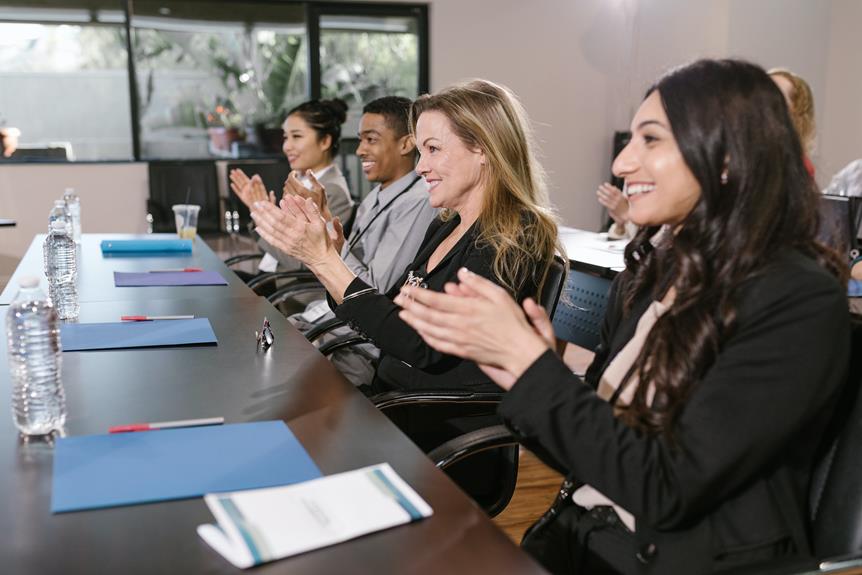Commencing a meeting effectively is crucial for its success. The initial moments can set the tone for the entire session, impacting productivity and engagement.
Consider the importance of structuring the beginning to capture participants' attention and align their focus towards the meeting's objectives. By incorporating key strategies and essential steps in the opening phase, you can maximize the value of your meetings and ensure that follow-up actions lead to tangible outcomes.
How to start a meeting?
To initiate a meeting seamlessly, the designated chairperson should open by greeting all attendees and outlining the agenda for the discussion ahead. This simple yet crucial step sets the tone for the meeting, ensuring that everyone is aligned on the purpose and goals to be achieved. By clearly stating the agenda, participants can mentally prepare for the topics to be discussed and understand the flow of the meeting.
Additionally, the chairperson should take a moment to introduce themselves and provide a brief background to establish credibility and set a professional atmosphere. Following this, attendees should also be encouraged to introduce themselves, fostering a sense of inclusivity and collaboration within the group.
Starting a meeting in this structured manner helps to create a positive environment where all participants feel valued and engaged from the outset. It lays the foundation for a productive discussion by ensuring that everyone is on the same page and ready to contribute effectively.
Setting the tone for productive meetings
Establishing a conducive atmosphere is paramount in laying the groundwork for productive meetings. To set the tone for a successful and efficient gathering, consider the following key points:
- Preparation is Key: Ensure that all necessary materials, such as agendas, presentations, and relevant documents, are shared with participants in advance. This allows attendees to come prepared and ready to engage in meaningful discussions from the start.
- Lead by Example: As the meeting facilitator, exhibit professionalism, positivity, and a clear focus on the meeting objectives. Your demeanor will influence the attitude and behavior of participants, encouraging a productive environment.
- Encourage Active Participation: Create opportunities for all attendees to contribute to the discussion. Foster an inclusive atmosphere where everyone feels their input is valued, leading to richer conversations and better outcomes.
- Set Clear Expectations: Clearly outline the meeting's goals, agenda, and expected outcomes at the beginning. This provides attendees with a sense of direction and purpose, helping to keep the discussion on track and ensure a productive use of time.
Engaging attendees from the start
Setting the stage for active engagement right from the outset of a meeting is fundamental to fostering a collaborative and dynamic atmosphere among attendees. To ensure that participants are fully engaged and ready to contribute, here are some effective strategies that can be implemented:
| Strategy | Description |
|---|---|
| Icebreakers | Use fun and interactive icebreakers to help attendees feel more comfortable and connected with each other. |
| Clear Agenda | Provide a clear and detailed agenda beforehand to give attendees an overview of what will be discussed. |
| Welcome and Introductions | Start the meeting with a warm welcome and brief introductions to create a friendly and inclusive environment. |
| Encourage Participation | Actively encourage all attendees to participate by asking for their input and opinions throughout the meeting. |
| Use Visual Aids | Incorporate visual aids such as slides or charts to help keep attendees engaged and enhance understanding. |
Essential steps for meeting preparation
Effective meeting preparation involves meticulous planning and coordination to ensure all necessary elements are in place for a productive and efficient gathering. To achieve this, consider the following essential steps:
- Define Objectives: Clearly outline the purpose of the meeting, including specific goals and outcomes to be achieved.
- Create Agenda: Develop a detailed agenda that outlines topics to be discussed, time allocations for each item, and designated speakers or presenters.
- Invite Relevant Participants: Ensure the right people are invited to the meeting based on their roles, responsibilities, and expertise related to the agenda topics.
- Prepare Materials: Gather and organize any relevant documents, reports, presentations, or other materials that will be needed during the meeting to facilitate discussions and decision-making.
Follow-through actions for meeting effectiveness
To enhance the outcomes of a meeting and ensure that decisions made are acted upon promptly and effectively, it is imperative to implement strategic follow-through actions.
Following a meeting, assigning clear responsibilities to individuals or teams is crucial. These actions should include setting deadlines for tasks, establishing accountability, and providing progress updates.
Sending out meeting minutes promptly can serve as a valuable reference point for all attendees, ensuring alignment on decisions made and action items assigned.
Additionally, creating a system to track progress on action items can help maintain momentum and prevent tasks from falling through the cracks.
Regular follow-up meetings or check-ins can be scheduled to review progress, address any challenges, and make necessary adjustments to deadlines or responsibilities.
